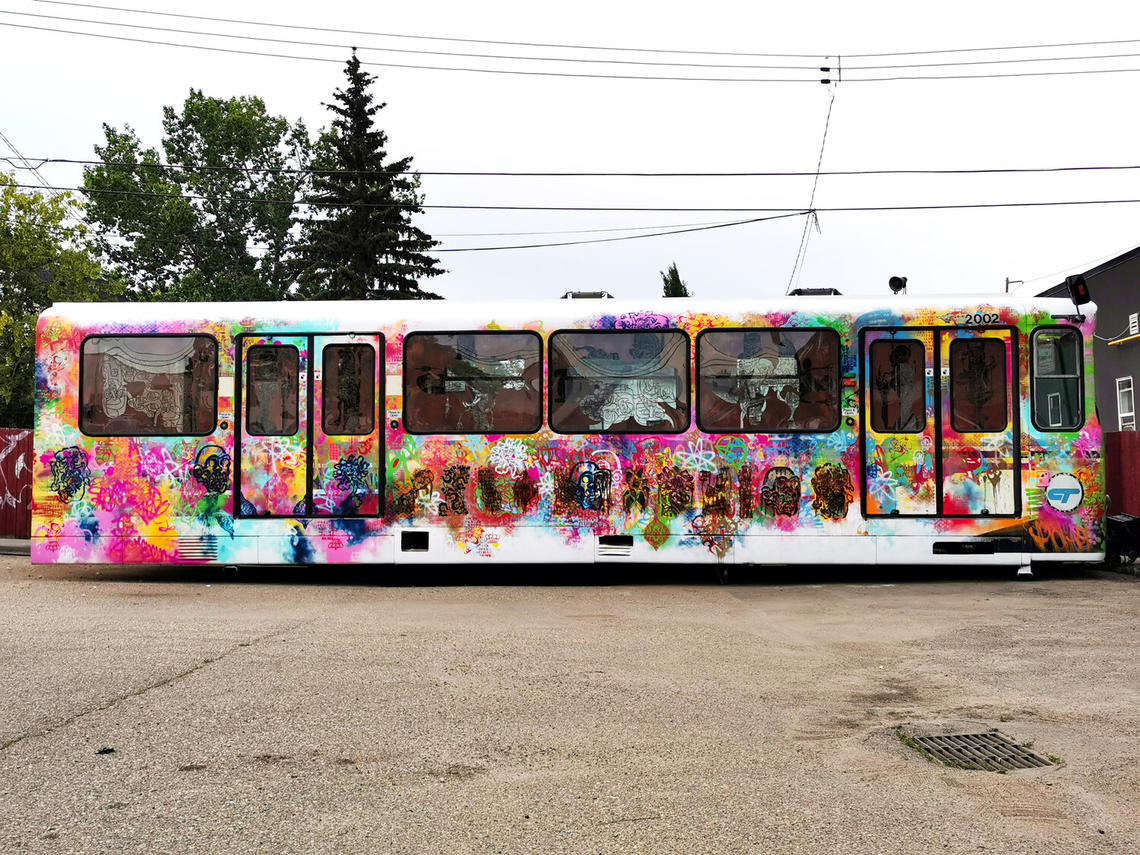This intervened-upon, object-based artwork serves a dual purpose. First, YYC/LRT alludes to the NYC subway system, the birthplace of the contemporary Graffiti/Street Art movement. As such, it pays homage to Faubert’s creative making roots. It is also an iteration of the progression of Faubert’s art practice into what he refers to as “Urban Interventionism”. The plasma torch-cut, interconnected, gender-fluid, culturally and ethnically hybridized figurative compositions that appear in the windows of the train carriage are rendered in one continuous line. This references the singular line a graffiti artist uses in scrawling their pseudonym across the urban city scape. Faubert wants to harness that energy and spontaneity to create a vocabulary of figure and form.
Urban Interventionism is rooted in notions of placemaking, defined by Faubert, as the creation of a special intervention to affirm specific meanings of that place, always leaving room for further critique and confirmation as the context shifts. It is embedded in the process of doing and is driven by what impresses, excites, saddens, fulfills, or otherwise provokes the artist. It is about the critical capacity of this process to confirm and interrogate the place-becoming. Most importantly for Faubert’s practice, placemaking is a dialogic space where the people-in-place construct meaning (Schneekloth & Shibley, 1995).
YYC/LRT, in its location at the corner of 8th Ave and 10th St SW, is supporting the evolving identity of Calgary’s Downtown West. Through art engagements with the community, the LRT car comes back into service. The aim of these engagements is to recognize, hear, listen to and engage with the diverse voices of the people who live, work and move through the Downtown West daily.



